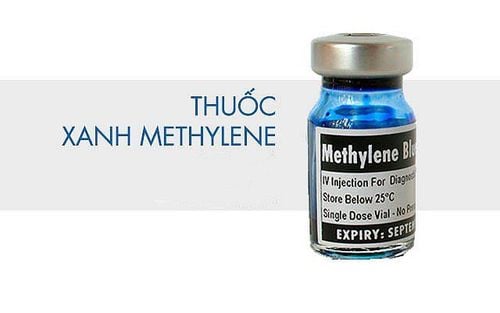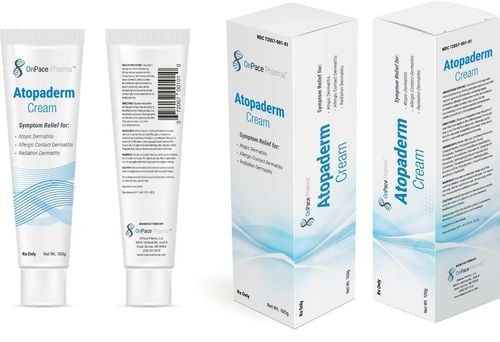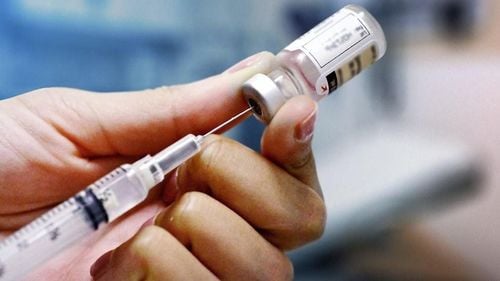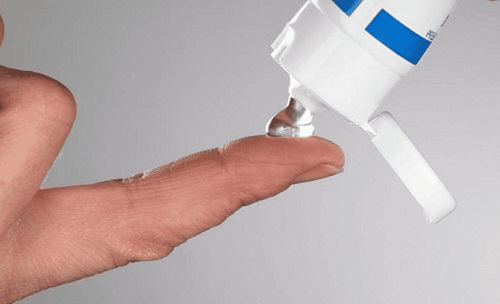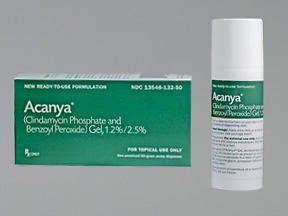This is an automatically translated article.
What is Maxxacne? And does maxxacne treat hidden acne? Let's learn about Maxxacne acne medication in the article below to use it safely and effectively.
What is Maxxacne for acne?
The main ingredient of Maxxacne is Clindamycin which belongs to the group of drugs to treat parasites, anti-infectives, antibiotics, and antifungals and is packaged in the form of aluminum tubes or plastic tubes with a content of 15 grams.2. What is the mechanism of action of Maxxacne for acne?
2.1 Mechanism of action Maxxacne Clindamycin is a lincosamide antibiotic that inhibits protein synthesis of Gram-positive bacteria and many anaerobes. It binds to the 50S subunit of the ribosome and affects both ribosome assembly and translation. Although clindamycin phosphate is inactive in vitro, rapid in vivo hydrolysis converts the compound to clindamycin with antimicrobial activity. The effect of clindamycin is mainly bacteriostatic although high concentrations can kill bacteria slowly against susceptible strains such as:Gram-positive aerobic cocci: Staphylococcus aureus, Staphylococcus epidermidis, Streptococcus (except S. faecalis), Pneumococcus . Anaerobic gram-negative bacilli: Bacteroides(B. fragilis) and Fusobacterium spp. Non-spore forming anaerobic gram-positive bacilli: Propionibacterium, Eubacterium and Actinomyces spp. Anaerobic gram-positive cocci: Peptococcus and peptostreptococcus spp, Clostridium perfringens (except C. sporogenes and C. tertium). Other bacteria: Chlamydia trachomatis, Toxoplasma gondii, Plasmodium falciparum, Pneumocystis carinii, Gardnerella vaginalis., Mycoplasma brominn. The following bacteria are generally resistant to clindamycin: aerobic gram-negative bacilli, Streptococcus faecalis, Nocardia sp, Neisseria meningitidis, methicillin-resistant Staphylococcus aureus, Haemophilus influenzae. 2.2 Pharmacodynamic effects of the drug Maxxacne Efficacy is related to the time period during which the agent level is above the minimum inhibitory concentration (MIC) of the pathogen.
After repeated application of clindamycin phosphate at concentrations equivalent to 10 mg of clindamycin per mL in isopropyl alcohol and water solutions, very low concentrations of clindamycin are present in serum (0–3 ng/mL) and less than 0. 2% of the dose is recovered in the urine as clindamycin.
Clindamycin concentrations have been demonstrated on acne in acne patients. The mean (±SD) concentration of clindamycin in acne vulgaris after topical application of clindamycin solution for 4 weeks was 0.60 ± 0.11 mcg.
2.3 Contraindications of Maxxacne Contraindications
Contraindications to topical clindamycin in individuals with a history of hypersensitivity to clindamycin Persons with a history of inflammatory bowel disease or a history of antibiotic-associated colitis.: Clindamycin May be absorbed systemically when applied to the skin or mucous membranes. Pseudomembranous colitis has been reported with systemic as well as topical clindamycin and may range in severity from mild to life-threatening, with onset up to several weeks after treatment discontinuation. Colitis is usually characterized by severe, persistent diarrhea and severe abdominal cramps, which may be accompanied by bloody and mucus-based stools. Treatment with topical clindamycin should be used with caution in patients with a history of gastrointestinal disease, particularly colitis. There is some evidence that pseudomembranous colitis, if present, may be more severe in these patients and may be associated with flare-ups in their underlying disease activity. 2.4 Undesirable side effects of Maxxacne Very common: Dry (23%), seborrheic skin (18%), pruritus (10%) Common (1% to 10%): Erythema Rare : Aggravated acne, erythema, scaly rash, skin disorders, gram-negative folliculitis, contact dermatitis Eye irritation, edema and keratosis may occur rarely . These symptoms may decrease when you stop using the medicine. 2.5 Overdosage with Maxxacne Topical Maxxacne may be absorbed in sufficient quantities to produce systemic effects. In case of overdose, symptomatic measures and medical intervention if necessary will be applied as prescribed by the doctor.
3. How to use Maxxacne to treat acne effectively?
The drug is intended for external use only by adults and adolescents (age 13 and older). Before using the medicine, wash your face thoroughly, then apply a thin layer of gel to the skin, avoiding the eyes and lips. Make sure the area where the medicine is applied is dry. Continuous treatment should not exceed 12 weeks. Note when using Maxxacne Do not smoke while using Maxxacne topical. High risk of fire. Clindamycin is an antibiotic, so it can cause diarrhea, which could be a sign of a new infection. If you have watery diarrhea or bloody stools, call your doctor. Do not self-medicate with anti-diarrheal medications unless your doctor tells you to. Rinse with water if this medicine accidentally gets in your eyes or mouth. Do not use other medicated skin products unless directed by your doctor. Avoid using skin products that can cause irritation, such as strong soaps, shampoos or skin cleansers, permanent hair colors or chemicals, bleach or hair waxes, or for skin with alcohol, spices, astringents or lime.
Please dial HOTLINE for more information or register for an appointment HERE. Download MyVinmec app to make appointments faster and to manage your bookings easily.




